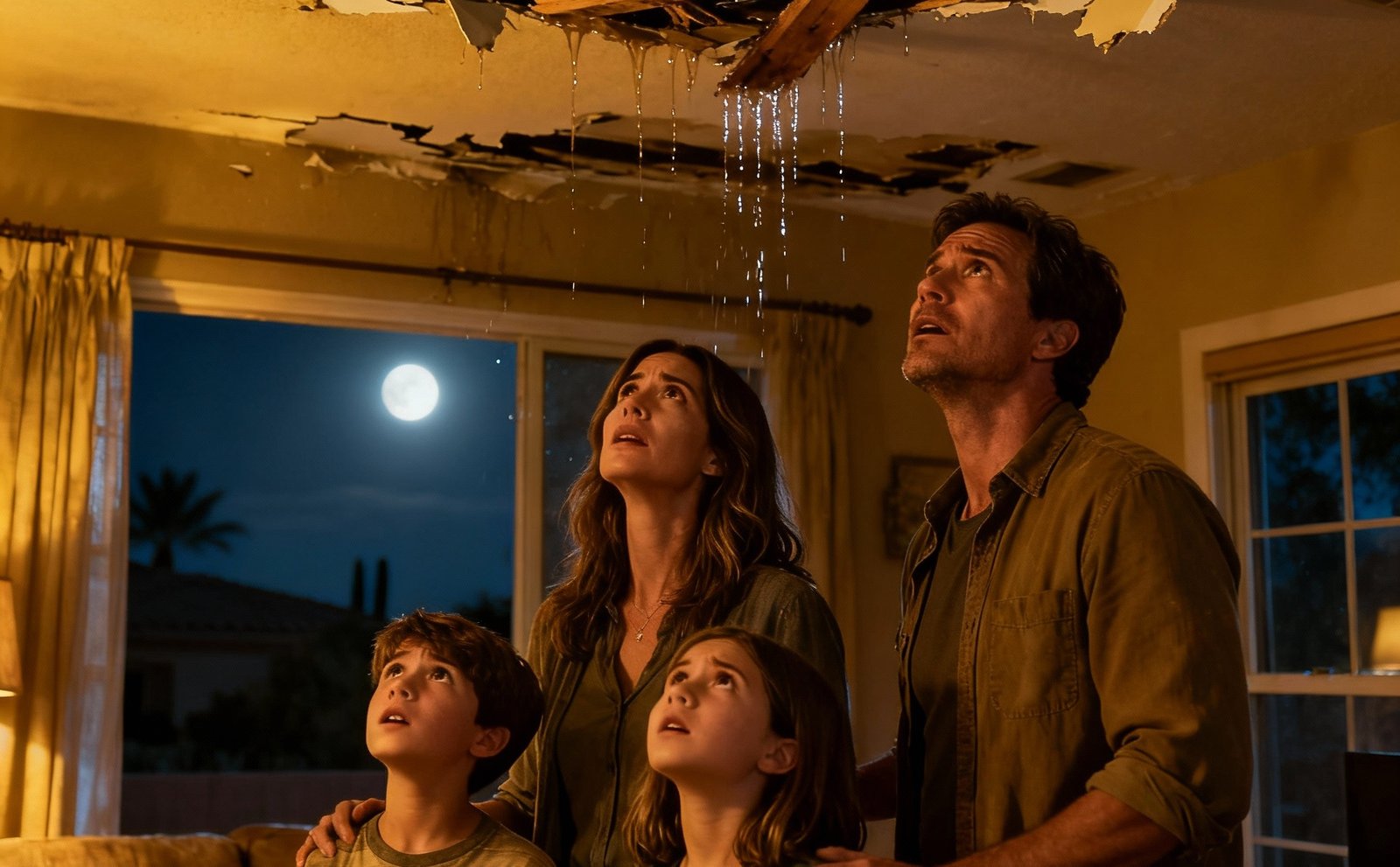Introduction: When the Rain Wouldn’t Stop
It was one of those late-summer nights in Scottsdale — dark clouds rolling over Camelback Mountain, thunder echoing, and wind tearing through the desert air. Inside their cozy home in McCormick Ranch, Daniel and Lisa Ramirez watched in disbelief as rain poured harder than they had seen in years. Within minutes, water began dripping near the kitchen light fixture, prompting them to realize they might soon need help from a trusted roofing company in Scottsdale AZ.
They placed a pot under the leak and prayed it would stop. But it didn’t. By morning, the ceiling plaster had bubbled, drywall was stained, and the air smelled of damp wood.
“We thought our roof was strong enough,” said Daniel. “We didn’t realize how fast monsoon rain can find even the tiniest crack.”
For many Scottsdale homeowners, the monsoon season brings not only spectacular lightning but also silent destruction — especially for roofs not maintained to handle Arizona’s unpredictable weather.
The Power of Arizona’s Monsoon: Beauty and Brutality
Monsoon storms are part of Scottsdale’s identity — fierce, brief, and often destructive.
According to the National Weather Service Phoenix Office, Arizona’s monsoon season runs from June 15 to September 30, bringing sudden downpours, high winds, and flash flooding.
In 2024 alone, Maricopa County recorded 1,400 + storm-damage insurance claims, and roof incidents made up over 60 percent (source: State Farm Storm Damage Report).
Daytime temperatures soar above 110 °F, then plummet during stormy nights — a cycle that expands and contracts roofing materials until they crack.
“It’s not just rain — it’s the shock of temperature change,” explains James T., senior inspector at Tip Top Roofing Service. “That daily stress slowly weakens your roof’s protective layers.”
How Roofs Fail During Scottsdale Monsoons
Monsoon damage rarely looks dramatic at first. Most failures come from water intrusion through weakened flashing, vents, or cracked underlayment.
Once moisture seeps in, it spreads silently — ruining insulation, staining ceilings, and inviting mold.
The Arizona Registrar of Contractors (AZ ROC) lists improper maintenance as the leading cause of post-monsoon roofing complaints statewide.
Flat roofs are especially vulnerable; even a small pond left for 24 hours can add hundreds of pounds of pressure, causing sagging or membrane separation.
“We see it every year,” says James. “Most damage happens months earlier — storms just expose it.”
A Real Story: How One Scottsdale Family Saved Their Home
After the second night of storms, the Ramirezes called Tip Top Roofing Service, who arrived within hours.
An inspection found loose flashing near the chimney, hairline cracks in the underlayment, and two clogged scuppers holding gallons of water.
How Tip Top Roofing Fixed It
Within two days, the crew:
- Removed damaged sections
- Reinforced the underlayment with heat-resistant material
- Replaced cracked tiles
- Installed new flashing and sealant
- Applied reflective coating to reduce heat absorption
By the next storm, their roof was watertight — and their peace of mind restored.
“We couldn’t believe how fast they worked,” Lisa said. “It felt like they cared about our home as much as we did.”
Their total repair cost: $2,100. Waiting longer could have cost over $10,000, according to HomeAdvisor’s 2025 Roofing Repair Guide.
The Emotional Cost of Neglect
For homeowners, storm damage isn’t just financial — it’s emotional.
A leaking roof feels personal because it threatens the place meant to protect you.
“When I saw water dripping into my kitchen, I felt helpless,” Daniel admitted. “It wasn’t about the ceiling — it was about losing control over the space that’s supposed to keep us safe.”
Roofing experts estimate that 70 percent of storm-related roof damage could be prevented with seasonal maintenance — and avoiding that anxiety is priceless.
How to Storm-Proof Your Scottsdale Roof
Practical steps every homeowner can take before the next monsoon:
- Schedule professional inspections each spring and fall.
- Clean gutters, scuppers, and downspouts before July.
- Trim overhanging trees to reduce wind damage.
- Apply reflective or heat-resistant coatings.
The U.S. Department of Energy reports these coatings can lower roof temperature by up to 30 percent. - Secure loose tiles and flashing.
- Keep your roofer’s number handy for emergency service.
“Prepared homeowners rarely face disasters,” notes David L., field supervisor at Tip Top Roofing Service.
Why Local Experience Matters
Not all roofing contractors understand Scottsdale’s extreme climate.
National franchises may use materials suited for colder states, but Tip Top Roofing Service uses heat-rated underlayments, UV-resistant coatings, and storm-tested systems built for Arizona weather.
“When you’ve repaired as many roofs as we have here, you don’t just see a leak — you understand what caused it,” says James T.
Protecting What Matters Most
Your home is more than bricks and beams — it’s where memories are made, laughter is shared, and safety is felt.
Every monsoon reminds us that while we can’t control the weather, we can control how well our homes stand against it.
“When the next storm came,” Lisa smiled, “I didn’t panic — I just watched the rain, knowing we were safe.”
Conclusion
Monsoon season will always test Arizona roofs — but preparation makes all the difference.
If you live in Scottsdale, don’t wait for the next thunderstorm to find your weak spots.
Call Tip Top Roofing Service at (480) 877-1643
Visit: 6830 E 5th Ave #205, Scottsdale, AZ 85251
Website: https://tiptoproofingservice.com
Protect your roof — protect your peace of mind.




